When you are improving your manufacturing line, the magic lies in industrial automation. Industrial automation is your path to more efficient operations, cost savings, and solving worker shortages. By integrating AI, robotics, and IoT, you’re upgrading your production and service delivery. These advancements help streamline your processes, ensuring your business stays competitive and prepared for the future. From precise palletizing to meticulous quality inspection, the applications are vast, each one turning potential challenges into opportunities for growth and innovation.
So, let’s dive into it.
The Strategic Advantage of Industrial Automation:
Industrial automation streamlines your operations, making your business more efficient and cost-effective. It’s like having a secret weapon that keeps you ahead of the competition. By using robots, AI, and IoT, you reduce reliance on manual labor, which can save you money and help you overcome the challenge of finding skilled workers.
Here’s how it benefits you:
- Cost and Time Savings: Robots work around the clock without breaks, speeding up production and lowering costs.
- Focus on Core Activities: Your team can concentrate on innovation and growth, leaving repetitive tasks to machines.
- Safety: Robots handle dangerous tasks, reducing the risk of accidents.
- Consistency and Quality: Automated processes ensure every product is made to the same high standard, boosting customer satisfaction.
In short, industrial automation is essential for keeping your business competitive and ready for the future, not just an option.
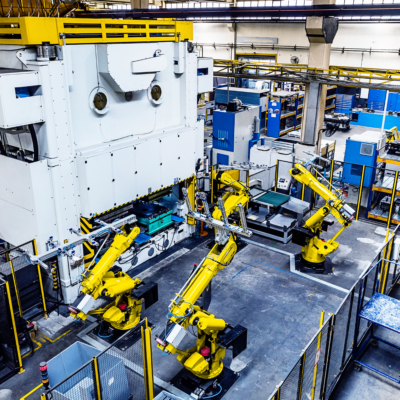
Why You Should Invest in Automation and How Much It Costs:
Industrial automation is transforming industries, making operations faster, smarter, and cost-effective. This shift is crucial for staying competitive and future-proofing your business. The industrial automation market, valued at USD 192.74 billion in 2023, is expected to grow to USD 401.48 billion by 2032. This growth is driven by advancements in robotics, AI, and IoT, enhancing production precision and operational efficiency.
For SMEs, investing in collaborative robots (cobots) offers a manageable entry point into automation. With cobots priced under $30,000, businesses can significantly improve profitability, quality, and tackle labor shortages. Options range from high-end models at around $100,000 to more affordable solutions at $10,000. This investment is a strategic move towards increased efficiency, innovation, and sustainability.
For detailed insights and model comparisons, visiting Qviro.com could provide valuable information.
10 Industrial Automation Applications:
1. Palletizing:
Palletizing is all about stacking products on pallets for shipping and storage. It sounds simple, but it’s crucial for keeping things moving smoothly and safely in warehouses and factories.
Why use machines to stack boxes? Well, doing this by hand over and over is tough work and can lead to mistakes or injuries. Machines can work faster, more accurately, and never get tired.
The cost of getting these machines can range a lot. You might pay as little as $50,000 for a basic setup. But if you want something really advanced, with the latest robots and tech, it could cost more than $200,000. It sounds like a lot, but think about the benefits these machines can bring.
Benefits of Palletizing Automation:
- Boost Productivity: Robots don’t need breaks. They keep your products moving, ensuring nothing stops, day or night. This means you get more done, faster, particularly when you’re swamped with orders.
- Accuracy and Consistency: Today’s machines are smart. They come with cameras and sensors that can pick up and place items with incredible precision. You’ll have fewer damaged goods and better use of space on each pallet, saving you money on transport and storage.
- Safer Workplace: Lifting heavy items is a common way workers get hurt on the job. With automation, you’re taking that risk away. This means fewer injuries, less downtime, and potentially lower insurance costs.
- Scalability: Whether you’re ramping up production or diversifying product lines, automated systems can be adjusted or reprogrammed to meet the evolving needs of your operation, providing a level of flexibility that manual processes simply can’t match.
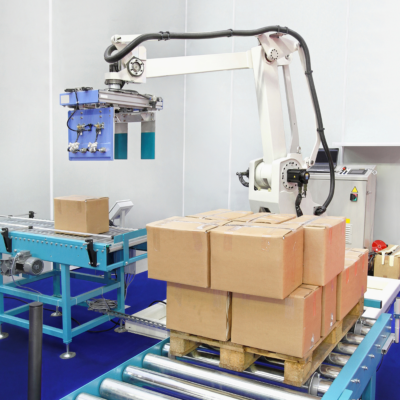
2. Pick and Place:
Pick and place is about moving things precisely from one spot to another. It’s like a robot playing a game of precision, crucial for jobs needing fast and accurate work, like making electronics or packing food.
Why make pick and place automatic? It helps do the job quicker, without errors, and keeps going without getting tired or distracted, unlike people. This lets your team focus on tasks that need a human’s touch.
The cost of automating pick and place depends on what you need. A simple system might cost around $10,000, but a top-notch one with the newest robots and tech can go over $100,000. It’s a big investment, but it pays off by making your operations better.
Here’s why automating pick and place is worth it:
- Boosts Productivity: Robots work non-stop, speeding up your production line.
- Accurate: Robots are precise. They place every item just right, cutting down on waste.
- Flexible: Upgrading your product line? Robots can easily switch tasks, growing with your business.
- Safer: Robots can do the risky jobs, reducing the chance of injuries from repetitive tasks.
- Saves Money Over Time: The initial cost is high, but you’ll save on labor costs and mistakes, adding more to your profits.
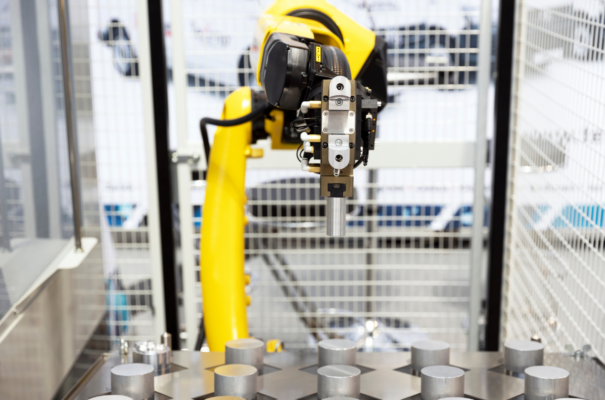
3. Assembly:
Assembly is where parts are put together to make a final product. It’s important for making things quickly and correctly.
Using machines for assembly helps because they can do repetitive jobs without getting tired or making mistakes. This means you can make more products and keep the quality high.
The cost to start using machines for assembly can range from about $25,000 for something basic to over $200,000 for the latest technology. It’s a big investment, but it pays off by making more products faster and with fewer errors.
Here’s why assembly automation is a good idea:
- More Products Made Faster: Machines work all the time without breaks, so you get more done.
- Better Quality: Machines are precise and do things the same way every time, so all products meet your standards.
- Easy to Change: If you have a new product, you can quickly adjust machines to work on it.
- Safer for Everyone: Some jobs can be tough on people. Machines can do these safely.
- Saves Money in the Long Run: Though it costs to start, you can save on labor costs and reduce waste.
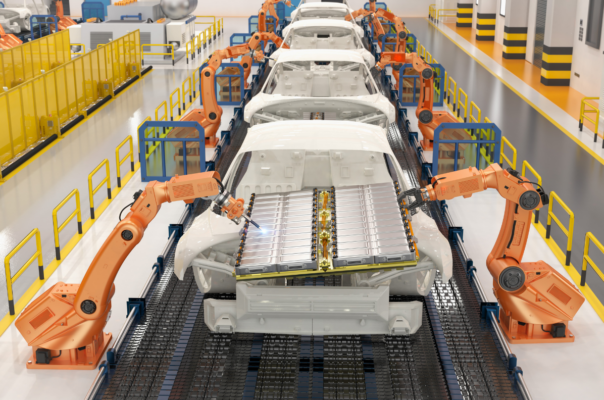
4. Machine Tending:
Machine tending means helping machines keep working by loading and unloading them. It’s important for keeping your production smooth and efficient.
Automating this task is smart because it’s often repetitive and can be risky. Robots can do it faster, more accurately, and safely around the clock, which helps avoid downtime.
Starting costs for automating machine tending are around $30,000, but for more advanced needs, it could go over $100,000. It seems like a lot, but it pays off by making your production safer and more efficient.
Here’s why machine tending automation is beneficial:
- Machines Stay Busy: Robots help avoid delays by keeping machines running.
- Safer Work Environment: Robots handle the risky tasks, reducing the chance of accidents.
- Better Efficiency: Robots are fast and precise, making sure tasks are done right every time.
- Adaptable: You can easily adjust robots to new tasks, making your production line more flexible.
- Saves Money: Even though it costs to start, you’ll save on labor and reduce mistakes, which adds up to savings.
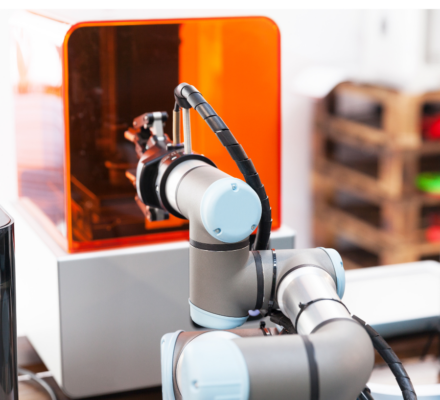
5. Material Handling:
Material handling means moving things around in places like factories and warehouses. It’s important because it helps get materials and products where they need to be, quickly and safely.
Why use automation for this? Moving stuff can be hard work and sometimes dangerous. Machines like conveyor belts, robots, and self-driving carts can do this job without getting tired or making mistakes. They keep everything moving smoothly, so there are no delays.
Setting up automated material handling can cost anywhere from $10,000 for simple systems to more than $100,000 for ones with advanced technology. It’s a lot of money upfront, but it can really pay off by making things more efficient.
Here’s why automating material handling is a smart move:
- Makes things faster: Machines move materials quickly, keeping up with your needs all day.
- Cuts down on mistakes: Machines are consistent, which means fewer errors and less wasted material.
- Keeps people safe: With machines doing the heavy lifting, there’s less chance of injury for your team.
- Changes as you do: Automated systems can be updated or changed to fit new products or materials.
- Saves money in the long run: Though it’s expensive to start, you’ll save on labor costs and reduce waste, which means more profit.
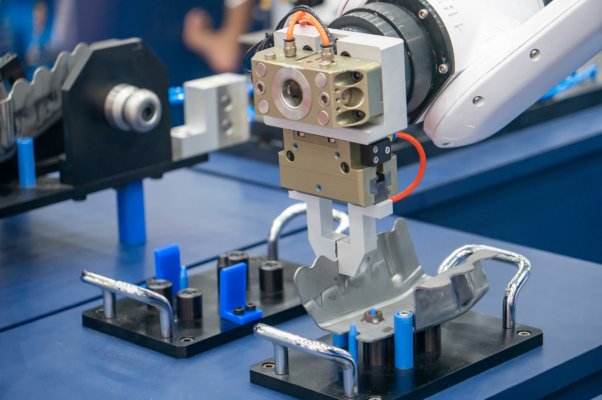
6. Welding:
Welding is how you join two materials together using heat or pressure. It’s essential in making things like cars and buildings. But welding can be hard and dangerous work, which is why using machines to do it makes a lot of sense.
Automating welding means using robots that can weld perfectly every time. They’re fast, don’t need breaks, and keep people safe from welding hazards. Setting up a robot for welding can cost from $20,000 for something basic to over $100,000 for the newest technology. It sounds expensive, but these robots can improve how you weld in big ways.
Here’s why using robots for welding is a good idea:
- Better Welds: Robots are super accurate, so every weld is just right.
- More Work Done: Since robots work all the time, you can get a lot more welding done.
- Safer: Welding can be risky, but robots take on those risks instead of people.
- Flexible: If you need to change what you’re welding, you can quickly tell the robot to do something different.
- Saves Money Over Time: Robots can help you save money by working faster, making fewer mistakes, and keeping things safe.
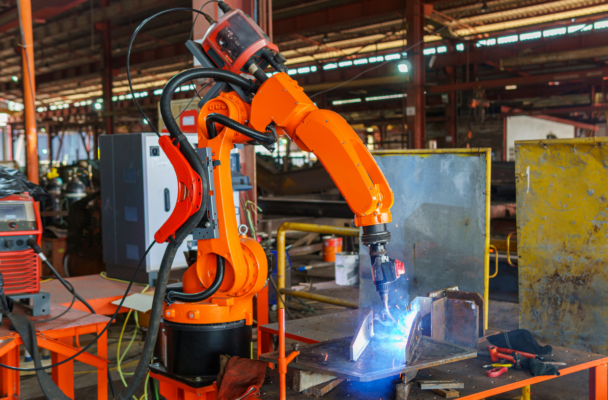
7. Quality Inspection:
Quality inspection is checking if products are good enough to sell. It’s like being a quality detective, making sure everything is perfect for customers.
Using machines for this job helps because checking every little detail by hand is hard and sometimes we miss things. Machines, like special cameras, can spot tiny flaws quickly and keep checking all day without getting tired.
Setting up machines to do quality checks can cost from $5,000 for simple tools to over $50,000 for the fancy ones that can handle more complex checks. It might seem like a lot, but it’s worth it because of all the benefits.
Here’s why using machines for quality checks is smart:
- Finds More Flaws: Machines can see tiny mistakes that we might not notice.
- Checks Faster: They can look over products way faster than we can.
- Always Working: Machines don’t need breaks, so they can keep checking products day and night.
- Saves Money: It costs money to start, but you’ll save in the long run by catching mistakes early and not needing as many people to check products.
- Keeps Quality High: Machines check everything the same way every time, so every product meets your high standards.
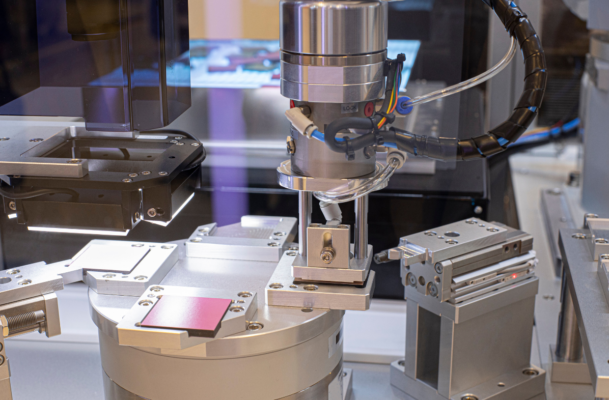
8. Packaging:
Packaging is wrapping your products so they’re ready to ship and look good. It’s important because it protects the products and makes a good impression on customers.
Using machines for packaging is a smart move because wrapping thousands of items by hand is slow and can lead to mistakes. Machines can do it quickly, without getting tired, and they make sure every item is wrapped just right.
Setting up machines for packaging can cost from $10,000 for simple ones to over $100,000 for fancy ones with lots of features. It’s a big cost upfront, but you end up saving time and money because the machines work fast, don’t waste materials, and keep going non-stop.
Here’s why using machines for packaging is beneficial:
- They’re Fast: Machines wrap products much quicker than we can by hand.
- Always Perfect: Each product is packaged the same way, looking great every time.
- Less Wasting: Machines use just the right amount of wrapping material, so there’s less waste.
- Work All the Time: They can keep packaging products day and night.
- Save Money: In the long run, you spend less on labor and materials, making your business more profitable.
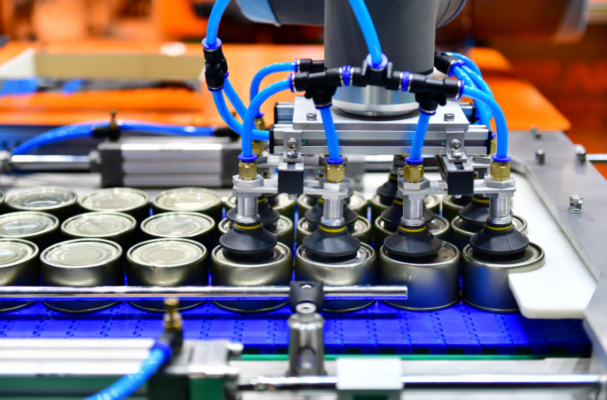
9. Screwing:
Screwing is simply using screws to put parts together, an essential step in making lots of products. Getting it right is super important for quality and safety. That’s why using machines to do it makes a lot of sense.
Automating the screwing process means using robots that can quickly and accurately place and tighten screws without making mistakes. This is much faster and more reliable than doing it by hand.
Setting up these robots can cost from $20,000 for basic ones to $80,000 for more advanced systems that can handle different types of screws and patterns. It’s a bit of an investment, but it pays off by making your production line faster and your products better.
Here’s why using robots for screwing is a good choice:
- More Accurate: Robots make sure every screw is just right, which means fewer problems with your products.
- Faster Production: They can work all the time, speeding up how many products you can make.
- Safer for Workers: It cuts down on the chance of people getting hurt from doing the same thing over and over.
- Consistent Quality: Every product is put together the same way, keeping quality high.
- Easy to Change: You can quickly adjust robots for different jobs, making them really versatile.
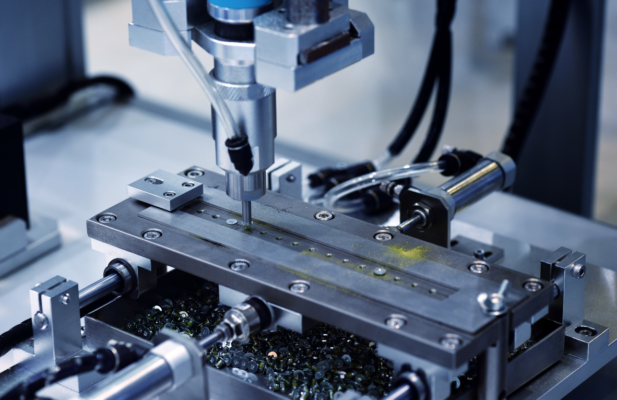
10. End of Line:
End of Line (EOL) is the final step in making a product where it gets packaged, checked, and readied for shipping. It’s super important because it’s the last chance to make sure everything is perfect for the customer.
Automating EOL tasks means using machines for packaging, labeling, and checking the quality. This is great because machines are faster, more accurate, and can work all the time without getting tired. This makes the whole making and packing process quicker and reduces mistakes.
The cost of adding automation to the EOL can range a lot. Simple setups might cost about $30,000, but if you want the whole package with robots and systems to check quality, it could go up to $100,000 or more. It sounds like a lot of money, but the benefits, like making more products faster and with fewer errors, can really make up for it.
Here’s why EOL automation is worth it:
- Makes More, Faster: You can produce and pack products non-stop, increasing how much you make.
- Keeps Quality High: Machines do a consistent job in packaging and checking, so products always meet high standards.
- Saves Money on Labor: Using machines for repetitive tasks saves on the cost of manual labor and cuts down on mistakes.
- Safer: Less chance of accidents since machines do the risky tasks.
- Flexible: You can quickly change the system to package different products, helping your business grow and adapt.
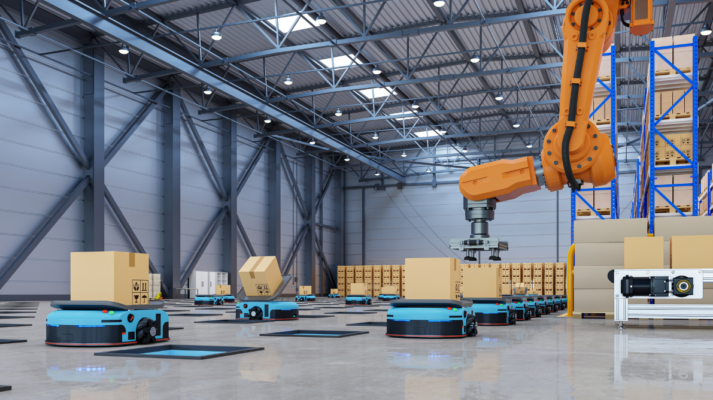
Conclusion:
To sum it up, using machines for tasks like packaging and checking products can really help your business do better. It makes things faster, reduces mistakes, and can save you money in the long run. Although it costs a bit to start, the benefits are huge – you’ll be able to make more products, keep quality high, and keep up with what your customers need. Think about how adding automation can make your whole operation smoother and set you up for a successful future.
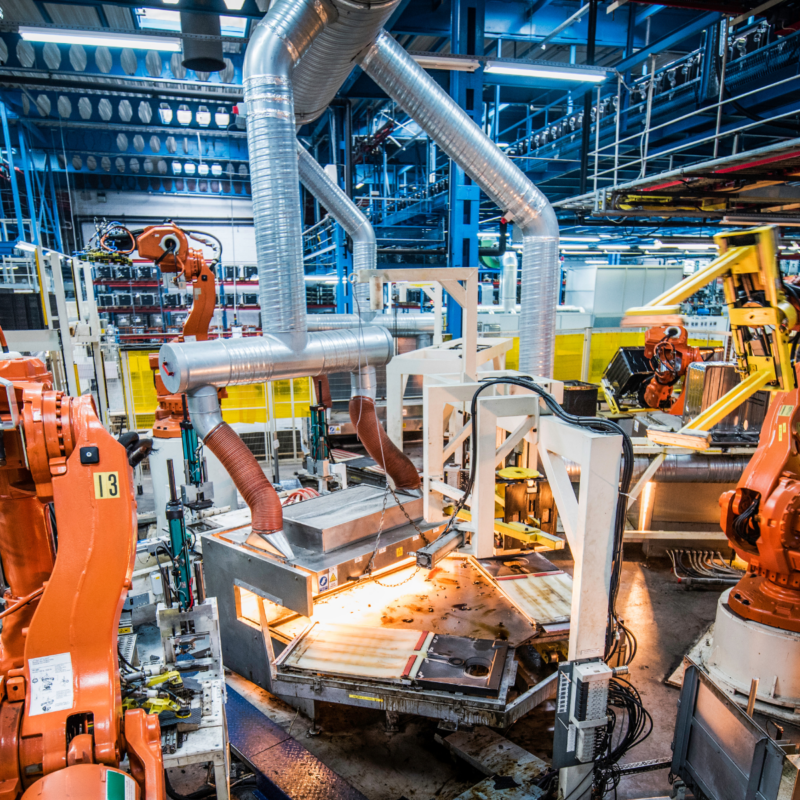






Thanks for sharing. I read many of your blog posts, cool, your blog is very good.
Some genuinely nice stuff on this internet site, I love it.
Having read this I thought it was extremely informative. I appreciate you finding the time and energy to put this article together. I once again find myself personally spending a significant amount of time both reading and commenting. But so what, it was still worth it!
I found this blog extremely informative!
Great Insights